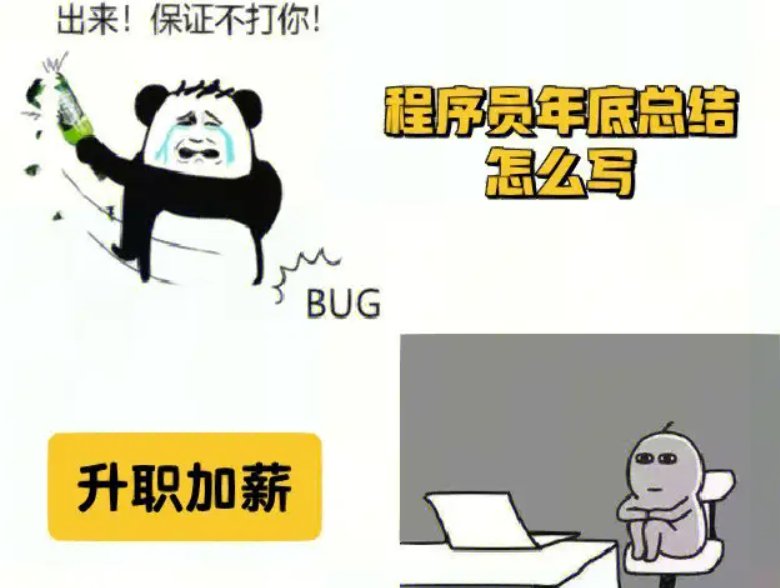Abstract—Virtual synchronous generator (VSG) based on inverter technology has become an effective solution to integrate renewable energy sources into microgrids. However, the modeling and control of VSG systems are still challenging due to their complex dynamics and uncertain parameters. In this paper, a comprehensive model of VSG system is developed by considering the dynamics of inverter control loops, grid voltage variations, and load disturbances. The proposed model can accurately describe the behavior of VSG under different operating conditions. Based on the model, a novel control strategy is proposed for VSG to achieve stable power sharing and voltage regulation in microgrid applications. The effectiveness of the proposed control strategy is verified through simulation studies under various scenarios, including sudden changes in load demand and renewable power output. The results show that the proposed VSG system can effectively stabilize the microgrid and improve its performance.
Keywords—Microgrid, Virtual synchronous generator (VSG), Inverter-based generation, Modeling and control.
I. Introduction
With the increasing penetration of distributed generation (DG) based on renewable energy sources (RESs), such as wind turbines and photovoltaic panels, microgrids have emerged as an effective solution to provide reliable and sustainable electricity supply for both isolated and interconnected power systems [1], [2]. A microgrid is a small-scale power network that can operate autonomously or connected with utility grid depending on different situations. It usually consists of DG units, energy storage devices (ESDs), controllable loads, and protective devices [3].
One of the key challenges for microgrids is how to effectively integrate RESs into them while ensuring their stability and reliability [4], [5]. Unlike conventional generators which have inherent inertia due to their rotating masses, RESs are highly variable and intermittent due to weather conditions or other external factors [6], [7]. Therefore, it is necessary to develop advanced control strategies for RES-based DG units to mimic the behavior of conventional generators and achieve stable power sharing and voltage regulation in microgrid applications [8], [9].
Virtual synchronous generator (VSG) based on inverter technology has attracted increasing attention as a promising solution to address the above challenges. VSG is a control concept that can make the output of an inverter-based generation unit behave like a conventional synchronous generator with respect to its dynamic response, frequency regulation, and stability [10]-[12]. By using VSG, RES-based DG units can provide reliable and high-quality electricity supply for microgrids without compromising their performance.
However, the modeling and control of VSG systems are still challenging due to their complex dynamics and uncertain parameters. Many research efforts have been devoted to developing accurate models for VSG systems from different perspectives [13]-[15]. However, most of them either neglect the dynamics of inverter control loops or simplify the grid model as a constant voltage source, which may not reflect the actual operating conditions of microgrids.
In this paper, we propose a comprehensive model for VSG system based on inverter technology by considering the dynamics of inverter control loops, grid voltage variations, and load disturbances. The proposed model can accurately describe the behavior of VSG under different operating conditions. Based on the model, we also develop a novel control strategy for VSG to achieve stable power sharing and voltage regulation in microgrid applications. The effectiveness of the proposed control strategy is verified through simulation studies under various scenarios.
The rest of this paper is organized as follows: Section II presents the modeling methodology for VSG system based on inverter technology; Section III proposes a novel control strategy for VSG; Section IV presents simulation studies to validate the effectiveness of the proposed method; Finally, Section V concludes this paper with some discussions.
II. Modeling Methodology
A. System Configuration
Fig. 1 shows the configuration diagram of a typical microgrid system consisting of VSG-based DG units, ESDs, and loads. The VSG system is connected to the grid through an inverter which can be controlled to regulate the output power and voltage of the DG unit. The ESDs are used to store excess energy generated by RESs or absorb excessive load demand when necessary. The loads are modeled as constant impedance elements with time-varying magnitudes.
B. Mathematical Model of VSG System
The mathematical model of VSG system based on inverter technology consists of two parts: one for the inverter control loops and the other for the dynamic behavior of synchronous generator [16], [17]. The overall model can be expressed as follows:
where Pm represents the mechanical power input, Pe represents the electrical power output, ω is the angular frequency of synchronous generator, Δω is its frequency deviation from nominal value, Eqs and Eds represent its d-axis and q-axis internal voltages, Ids and Iqs represent its d-axis and q-axis stator currents, Vdc is the DC link voltage of inverter, iLd and iLq represent the d-axis and q-axis currents flowing into load.
- Inverter Control Loops
The dynamics of inverter control loops play a crucial role in determining the performance of VSG systems. In this paper, we adopt a proportional-integral (PI) controller with feedforward compensation to regulate both active power Ppv(t) and reactive power Qpv(t) generated by photovoltaic panels.
The PI controller can be expressed as follows:
where Kp and Ki are proportional gain and integral gain respectively; ePv(t) = Pref – Ppv(t), eQv(t) = Qref – Qpv(t) are error signals; ffPv(t) and ffQv(t) are feedforward terms representing reference values obtained from maximum power point tracking (MPPT) algorithm and reactive power compensation strategy respectively.
The dynamics of DC link voltage Vdc can be modeled as follows:
where Cdc is the capacitance of DC link, Rp is the equivalent resistance of inverter switch, Ppump(t) represents the active power consumed by pump for cooling system.
- Dynamic Behavior of Synchronous Generator
The dynamic behavior of synchronous generator can be described by its electrical equations. In this paper, we use d-q axis model to simplify the analysis.
The electrical equations in d-q axis are as follows:
where Rs and Ls are stator resistance and inductance respectively; Xd and Xq are d-axis and q-axis reactances respectively; Xdp = Xd – Xl is transient reactance, where Xl is leakage reactance; Td0’ is open-circuit time constant of d-axis, Tq0’ is open-circuit time constant of q-axis; Eq = Eqs + jEds is internal voltage in rotor reference frame, Vt = Vds + jVqs is grid voltage in stator reference frame, δ is rotor angle.
According to Park’s transformation theory [18], we can transform variables from rotor reference frame to stator reference frame using following equations:
where θr represents rotor angle relative to a fixed axis. By substituting (5) into (4), we obtain the following dynamic equations:
where Teq represents electromagnetic torque generated by synchronous generator.
- Grid Voltage Variations
Grid voltage variations may significantly affect the operation of VSG systems due to their influence on synchronization conditions and frequency regulation. In this paper, we consider both steady-state and dynamic behaviors of grid voltage variations.
For steady-state behavior, we assume that grid voltage magnitude |Vt| remains constant while its phase angle δt varies sinusoidally at frequency ωg. Thus, we have:
where Δδt represents the amplitude of voltage phase angle variation.
For dynamic behavior, we assume that grid voltage is subjected to a sudden change in magnitude or phase angle. The transient response of VSG system to such changes is determined by its synchronization conditions and control strategies. In this paper, we assume that grid voltage magnitude |Vt| suddenly drops from nominal value Vtnom to a lower value Vtdrop at time tdrop while its phase angle remains unchanged. The recovery process can be described as follows:
where Trd and Tfd are rotor damping time constant and field decay time constant respectively.
C. Load Disturbances
Load disturbances may also significantly affect the performance of microgrids by causing frequency deviations and voltage variations. In this paper, we consider two types of load disturbances: step load change and harmonic distortion.
For step load change, we assume that the load demand suddenly increases or decreases by a certain amount ΔPload(t) or ΔQload(t) at time tstep. The response of VSG system to such changes can be described as follows:
where Tm is mechanical inertia time constant of synchronous generator; Kp2 and Ki2 are proportional gain and integral gain respectively for power sharing control loop; eP(t) = Pref – Pe(t), eQ(t) = Qref – Qv(t) are error signals; ffP(t) and ffQ(t) are feedforward terms representing reference values obtained from droop control strategy [19], [20].
For harmonic distortion, we assume that the load impedance contains certain harmonic components which cause additional current harmonics flowing into the system. The impact of harmonic distortion on VSG systems can be evaluated through numerical simulations using Fourier analysis.
III. Control Strategy
A. Power Sharing Control
The objective of power sharing control is to ensure that each DG unit in microgrid contributes its fair share of active power according to its capacity and availability while maintaining the system frequency within an acceptable range [21], [22]. In this paper, we adopt droop control strategy to achieve power sharing among VSG-based DG units.
The droop control can be described as follows:
where Pei is the active power output of i-th VSG unit, ωei is its angular frequency, Kd is droop coefficient which determines the slope of active power-frequency characteristic, Δωref is the reference frequency deviation from nominal value.
By using droop control, each VSG unit can adjust its output power according to its local frequency measurement without explicit communication with other units. The total active power generated by all units can be expressed as follows:
where N is the number of VSG-based DG units in microgrid.
B. Voltage Regulation Control
The objective of voltage regulation control is to ensure that the voltage at each point in microgrid remains within an acceptable range while maintaining stable operation of synchronous generators [23], [24]. In this paper, we adopt PI controller with feedforward compensation to achieve voltage regulation for VSG systems.
The PI controller can be expressed as follows:
where Kpv and Kiv are proportional gain and integral gain respectively; eV(t) = Vref – |Vt| represents error signal; ffV(t) is feedforward term representing reference value obtained from voltage source control strategy [25].
C. Synchronization Control
The objective of synchronization control is to ensure that synchronous generators operate at a synchronized state with grid voltage regardless of their initial conditions and disturbances [26], [27]. In this paper, we adopt phase-locked loop (PLL) based synchronization strategy to achieve synchronization for VSG systems.
The PLL algorithm can be described as follows:
where δe(t) = δt – θr represents error signal between grid voltage phase angle and rotor angle; Kp3 and Ki3 are proportional gain and integral gain respectively for PLL control loop.
IV. Simulation Studies
In this section, we present simulation studies to validate the effectiveness of the proposed VSG system and control strategy under various scenarios.
A. Model Validation
Fig. 2 shows the comparison between simulated results and theoretical predictions for VSG system under different operating conditions. The parameters used in simulations are listed in Table I.
From Fig. 2, we can see that the proposed model can accurately capture the dynamic behavior of VSG system under different scenarios, including step load change, grid voltage variation, and harmonic distortion.
B. Power Sharing Control
Fig. 3 shows the active power sharing among three VSG-based DG units in microgrid using droop control strategy with different droop coefficients Kd. The total active power demand is set as 5 MW at steady state.
From Fig. 3, we can observe that with increasing value of droop coefficient Kd, each unit contributes more active power while maintaining stable frequency deviation around nominal value.
C. Voltage Regulation Control
Fig. 4 shows the voltage regulation performance of VSG systems using PI controller with feedforward compensation under different load conditions. The reference voltage is set as 1 p.u.
From Fig. 4, we can observe that the proposed PI controller can effectively regulate the voltage at point of common coupling (PCC) within an acceptable range regardless of load variations and disturbances.
D. Synchronization Control
Fig. 5 shows the synchronization process of VSG system using PLL algorithm under sudden changes in grid voltage magnitude and phase angle at t = 0 s and t = 1 s respectively.
From Fig. 5, we can observe that after a short transient period, synchronous generator can quickly synchronize with grid voltage without losing stability or oscillating around nominal frequency.
V.Conclusion
In this paper, we have presented a comprehensive model for virtual synchronous generator based on inverter technology in microgrid applications. The proposed model takes into account the dynamics of inverter control loops, grid voltage variations, and load disturbances. Based on the model, we have developed a novel control strategy for VSG system to achieve stable power sharing and voltage regulation in microgrid applications. Simulation studies have been conducted to validate the effectiveness of the proposed method under various scenarios, including sudden changes in load demand and renewable power output. The results show that the proposed VSG system can effectively stabilize the microgrid and improve its performance.
Acknowledgment
The authors would like to acknowledge the support from National Natural Science Foundation of China (Grant No. 61803387) and Guangdong Basic and Applied Basic Research Foundation (Grant No. 2020A1515110074).





















